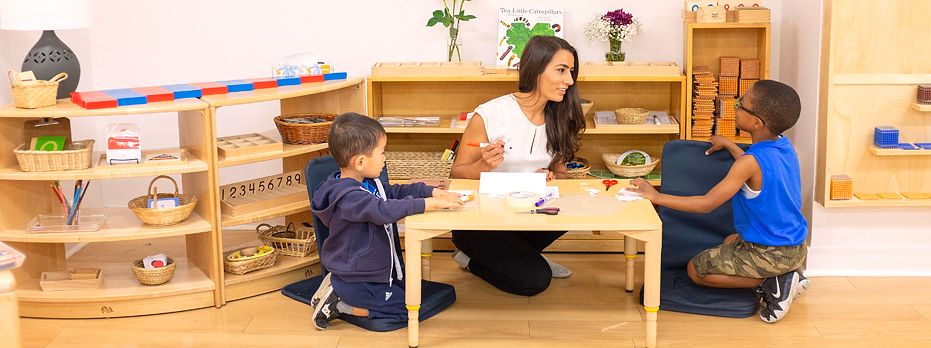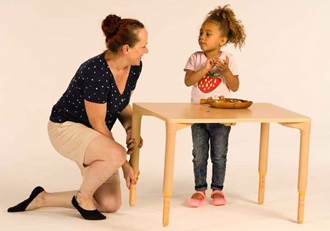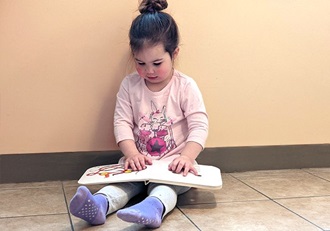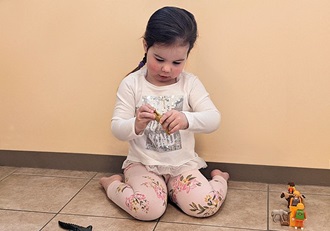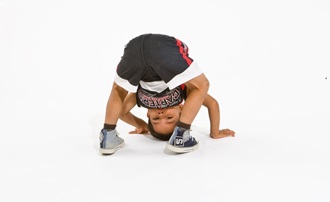Alternative Learning Positions:
Supporting Children’s Appropriate Motor Development
| April 2022Close your eyes and imagine for a moment a traditional classroom. Probably the educational model you conjured up included chairs and desks. Possibly even lined up in rows facing a chalkboard. Try a Google Image search and you’re likely to get similar results.
While sitting in a chair supports effective performance of academic tasks such as handwriting, compositional writing, or math, many educators now question whether it really is the optimal position for learning. In regards to early childhood environments, sitting for long periods in a chair may not only be ineffective for learning, it is also not developmentally appropriate.
Sitting in a chair, although it appears easy, is an elevated, physical-motor skill for young children. And, like many things in child development, the way to help a child develop the ability to sit properly in a chair, is by not sitting in a chair! Children need to first build coordination, trunk control, and balance. This is achieved by lots of big body movement and play—crawling, running, jumping, spinning, or climbing.
When a child needs to do a more focused activity, such as listening to a story, coloring, puzzles, or manipulative play, there are several alternatives to sitting in a chair that will help build critical muscles and core strength as well. Save the chairs for activities that require secure seating such as mealtimes. For those activities make sure you have an appropriately sized chair with the right support to provide postural stability.
Below are some suggestions of alternative learning positions. The key is flexibility and creativity! Remember that these are all natural—and even preferred positions—for children to work in. Provide the space and materials and trust the instincts of the child to do what is best for their development.
Vertical Surface
The vertical surface is a critical alternative learning position for young children. We usually think of having students practice fine motor tasks at the desktop level. However, a vertical (up and down) surface is actually the natural and preferred plane for young children. The desktop or horizontal plane is more appropriate for older children and adults to work in.
Using a vertical surface has many benefits for young children. Performing a task in a standing or tall kneeling position requires and develops core strength. The large size of a chalkboard or white board also invites the use of bigger arm movements exercising upper body and arm muscles and joints. Working in this position also engages the shoulder and arm to compete with gravity, amplifying the workout. Shoulder stability is key in developing fine motor control. Working on a vertical surface also naturally encourages the extended wrist position that will later be needed for writing efficiently on a horizontal surface.
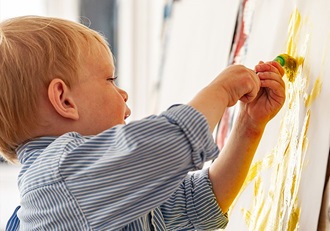
Look around your classroom for some easily accessible vertical surfaces, such as the following:
- Walls
- Easel
- Chalkboard
- Whiteboard
- Classroom Table tipped on its side
- Backs of large cupboards
- Metal Filing Cabinet (instant magnetic letter center)
- Washer/Dryer
- Refrigerator
Many traditional table top activities can be transformed easily into vertical activities. Simply provide the materials near to the vertical surface and watch the children discover the possibilities. A wall or cupboard back can be converted into a useable surface by attaching large pieces of paper. Some materials you could consider are:
- Coloring and writing tools
- Paint
- Stickers
- Stamps
- Shaving Cream
- Play Doh®
- Velcro® shapes
- Magnetic letters and shapes
For more unconventional uses of your vertical surfaces see Sandra Duncan’s article: Vertical Learning with Classroom Walls
Underside of Table
This “Michelangelo” position really works against gravity for maximum clout! Instead of the ceiling though, tape a paper to the underside of a desk or table. Place blankets and pillows underneath to create a cozy and inviting space for the children to lie on their backs and color. Young children absolutely love this alternative learning position!
Table with Extended Legs
For activities that require a horizontal surface such as puzzles, a table with adjustable legs adds flexibility to the level of the surface. Extend or shrink the legs to an appropriate height for standing, kneeling, or even floor work.
Floor Sitting Options
Floor sitting options offer a wide range of alternatives to sitting in chairs at a table. The positions shown below are all developmentally appropriate and support joint health and development of trunk stability. These positions support the development of muscles and balance needed to later sit on a chair.
We should expect young children to change their position often when sitting on the floor—that is natural and the way kids stay alert and learn to manage their bodies in space. Young children learn best when their bodies are safely and comfortably positioned.
French Fries: Long sit position with legs straight out in front, develops trunk stability and protects knee and hip articulations.
Mermaid: Side sit position with both legs tucked to one side encourages trunk involvement and development of balance when sitting.
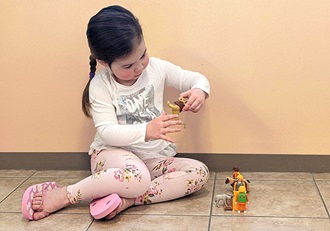
Tummy Time: Lying on tummy propped up on elbows is highly recommended for learning, listening, and even developing scissor skills! Consider the use of an incline surface (e.g., 2–3-inch binder) for practicing of fine motor tasks. Tummy Time positioning with an incline surface sets children up for good positioning of arm, hand, and wrist, and promotes an extended back when coloring, experiential prewriting, handwriting, and writing as developmentally appropriate.
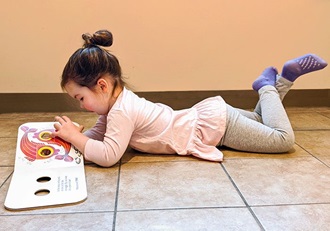
Recliner: Leaning back propped up on elbows with the knees bent is a very active position in terms of involving the trunk and stabilizing the head and neck. Perfect for story time!
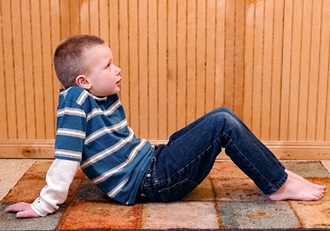
Ball Sit: Sit upon a small to medium-sized exercise ball with feet connected firmly to the ground. Using chair balls for tabletop activities is a super idea to help build trunk control needed for sitting effectively in a traditional chair to perform schoolwork.
What about Criss-Cross Sitting as a Learning Position?
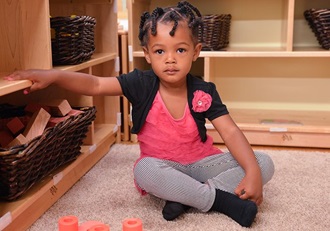
Criss-Cross Sitting, pictured above, is also known as Tailor Sitting. This floor sitting position is commonly requested and even mandated in many Early Childhood classrooms…but should it be? The answer is no.
Criss-Cross Sitting is certainly one option for floor-sitting, but is a difficult position for many young children to assume and maintain. It requires establishment of crossing midline, substantial trunk control, coordination, and balance, which many young children have not yet mastered. Just as one size does NOT fit all, one sitting position will never accommodate the developmental sitting needs of all young children. Young children need to be allowed to move in and out of positions when sitting on the floor.
Important Note on “W” Sitting
“W” sitting occurs when children sit on the floor with their legs bent in the shape of a “W”. Children may develop a habit for “W” sitting as a way to establish increased stability in their bodies when they cannot assume and maintain the criss-cross sitting position. Unfortunately, “W” sitting compromises knee and hip joint positioning, inhibits trunk stability needed for sitting, and may impact the development of proficient hand skills. Therefore, teachers and parents should gently, but firmly discourage “W” sitting.
“W” Sitting
Set Children up for Success
Alternative learning positions facilitate appropriate development of young children and ultimately support the ability to sit effectively in a chair at a desk to perform schoolwork. Remember, you, as the adult, hold the key to successful sitting for children and their learning. Offer alternative learning positions to young children and watch their attention, engagement, and learning grow.
Please visit www.writeoutofthebox.com for more information to support the appropriate development of young children.

